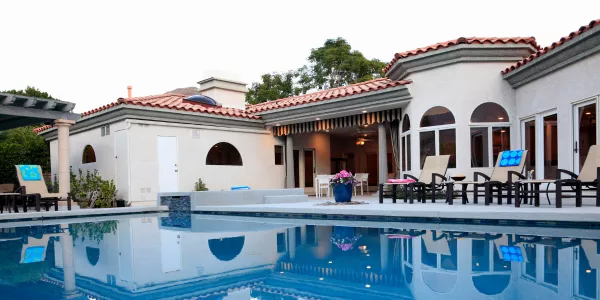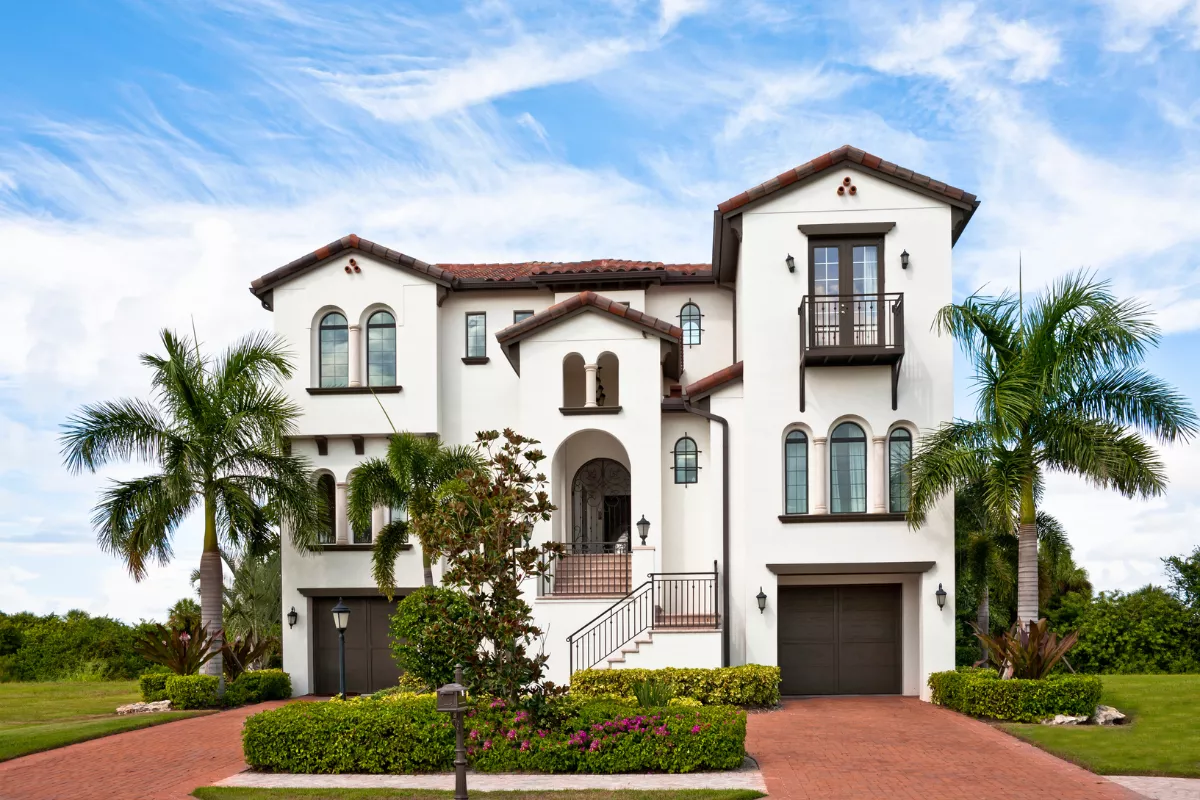Spanish style homes are influenced by colonial architecture constructed during the Spanish era and have a number of significant design elements, including stucco and terracotta roof tiles. The areas of the United States that were ruled by Spain, such as Florida, California, and the Southwest, are home to the majority of them.
Spanish style homes have won people over all over the world over with their unique architectural features and rich history. These houses have a classic charm that combines artistic beauty with practicality. In this article, we will examine the many aspects of Spanish-style homes, including their nomenclature, how they differ from Mediterranean-style homes, and how common they are in the various US states.
What are Spanish style homes called?
There are several names for Spanish style dwellings, each denoting a different facet or place of origin of the architectural design. One phrase that is frequently used is Spanish Colonial, which comes from the architectural styles of the Spanish colonies in North and South America.
These homes are distinguished by their red tile roofs, which are intended to keep the house cool in hot weather, small, wood-framed windows, and thick walls covered in stucco.
The phrase Mission style, which draws inspiration from the historic Spanish missions found throughout the southwestern United States, especially in California, is another frequently used phrase. While this architectural style shares many characteristics with Spanish Colonial homes, it frequently has more ornate, decorative decorations that draw inspiration from the missions' extravagant designs.
Hacienda style is an additional term used to describe homes designed in the Spanish style, usually related to big estates or ranches. These residences prioritize comfort and space, and they are frequently constructed around a central courtyard to offer a private outdoor living area.
What is the difference between Spanish style and Mediterranean style?
Due to their shared history and geography, homes designed in the Spanish and Mediterranean styles have certain variances but also many commonalities.
Mediterranean-style residences are influenced by the nations that border the Mediterranean Sea, such as Greece, Italy, Spain, and Morocco. This architectural style is renowned for fusing features from many different cultures in an eclectic way.
Similar to Spanish style homes, Mediterranean homes frequently have stucco exteriors; however, the color scheme can be more expansive, including more whites and creams in addition to earthy tones.
Roofing is yet another unique characteristic. Both architectural types have tile roofs, although residences in the Mediterranean region may have a more colorful tile selection and may feature flat roof components that are evocative of Greek or Italian architecture.
Mediterranean homes often feature more open, flowing interior spaces that reflect the region's tendency toward a blend of indoor and outdoor living areas.
Mediterranean homes often include larger windows and doors, as well as more decorative elements like wrought iron grills or intricate woodwork, which reflects the variety of cultural influences that have shaped this architectural style.
What state has Spanish style homes?

Many states in the US have a high concentration of Spanish style dwellings, especially those having a history of Spanish colonization or conditions resembling those of Spain. Because of the early 20th-century Spanish Colonial Revival movement, which aimed to preserve and honor the state's Spanish architectural legacy, California is arguably the most well-known state for residences built in the Spanish style.
There are many stunning examples of Spanish style residences in cities like Santa Barbara, San Diego, and Los Angeles, ranging in size from little bungalows to large estates.
Arizona is another state where Spanish style dwellings are prominent, due to its desert climate and historical Spanish influences. These dwellings' small windows and thick walls work well together to naturally cool the hot, sunny surroundings.
Florida also has a good number of houses built in the Spanish style, especially in towns like Miami and St. Augustine, which was founded by the Spanish and is the oldest city in the United States. The adaption of Spanish architectural characteristics, including huge covered porches and wide overhanging eaves, to give shade and ventilation was influenced by Florida's humid environment.
Numerous homes in the Spanish style may be seen in Texas, a state with a long history of Spanish and Mexican influence, particularly in towns like San Antonio and El Paso. The state's cowboy and rancher history is reflected in these residences, which frequently have more rugged, rustic features.
What makes a house Spanish Style?
Though they differ greatly from one another, Spanish-style homes share a few characteristics that distinguish them from other American home designs, especially the revivals with English influences.
Spanish colonial homes heavily reference Meddieterian architectural designs. Many of the practical features, such as terracotta roofs and stucco walls, that were intended to keep dwellings cooler in hotter climates are now cherished components of this architectural style.
Built beginning in the late 19th century, revival homes also have wrought iron banisters, vivid tiling, and exposed beams. Many of these homes have exposed stucco walls and tile interiors, however more contemporary designs may still appear classic.
Exterior
- Stucco Walls
- Terracotta Roofs
- Wooden Support Beams
- Small Windows
- Ornamentation
- Local Materials
Interior
- Decorative Tiles
- Domed Ceilings
- Visible Wooden Beams
- Wrought Iron
People Also Ask
What makes Spanish style homes attractive?
Spanishstyle homes continue to be popular among architects and residents alike because of their distinctive combination of historical significance, aesthetic beauty, and practical design.
Known by various names such as Spanish Colonial, Mission, or Hacienda style, these residences preserve the cultural heritage of their native lands while adjusting to the regional environment and contemporary requirements.
What is the history of Spanish Style homes?
Although numerous churches and buildings from the Spanish colonial era may still be found in America, the majority of houses are examples of the revivalist style. Beginning in the 1800s, architects started creating homes that were reminiscent of Spanish colonial architecture, partly due to events such as the world's fair.
In many cities, the design of public buildings and areas was similarly centered on a single, Spanish-inspired aesthetic. Like any revival trend, Spanish Revival homes are not perfect reproductions. There were contemporary features including second stories and glass windows.
Some aspects, such as the Spanish Baroque and Moorish Revival, blend design elements from several regions and historical periods. American Spanish style home building has also been influenced by Mexican architectural movements.

 Marcio Vasconcelos
Marcio Vasconcelos





